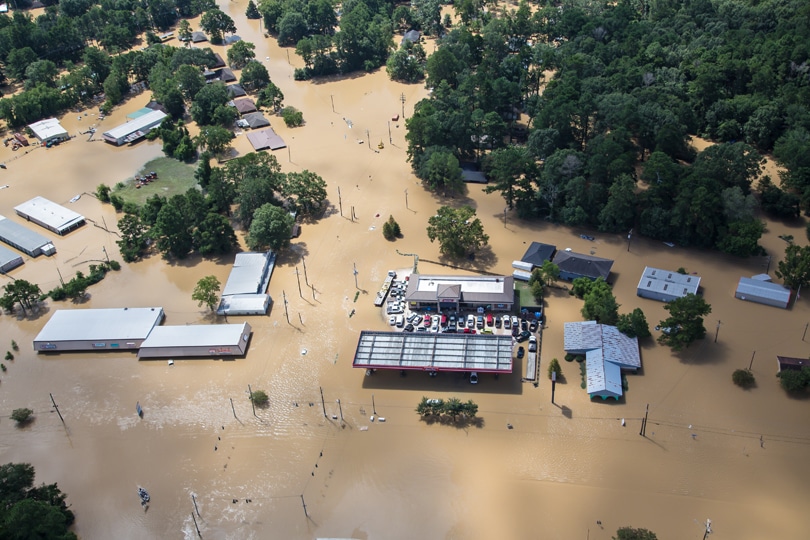Human-caused climate change likely doubled the chances of the torrential rains that caused deadly flooding in Louisiana and damaged 60,000 homes in the state, a new study has found.
Less than a month after the deluge that killed 13 people, a team of scientists have just published an analysis of rainfall records going back to the 1930s alongside computer model simulations.
Lead author of the study Dr. Karin van der Wiel, a research associate at both Princeton University and the National Oceanic and Atmospheric Administration, said the extra greenhouse gases in the atmosphere had now “changed the odds” for Louisiana being hit by torrential downpours.
Compared to the year 1900, the model analysis had clearly shown that the extra greenhouse gases in the atmosphere had increased the chances of a torrential downpour in that Gulf Coast region.
Van der Wiel told DeSmog, “The odds for a comparable event have now changed by at least 40 per cent, and our best estimate is a doubling. That is because of the increases in greenhouse gases.”
The study has been published in the European Geophysical Union’s journal Hydrology and Earth System Sciences and will now go through an open peer review process, meaning the conclusions could change.
Costly and Deadly Louisiana Floods
Rain started falling in central parts of Louisiana around August 10, with areas around Baton Rouge among the hardest hit. The area of Watson registered more than 31 inches of rain in one day.
The Red Cross, which said its own relief efforts would cost $30 million, described the floods as the worst natural disaster in the U.S. since Hurricane Sandy in 2012.
Thousands of Louisiana families were evacuated, tens of thousands of homes were flooded, and more than $100 million-worth of crops were ruined.
In the study, the research team analyzed rainfall records and found that last month’s Louisiana event was likely a 1-in-550 year downpour.
The chances of a similar storm unfolding anywhere in the central Gulf Coast area was now one-in-30 years.
Van der Wiel said the best way to understand the role of climate change on extreme weather was to ask how greenhouse gas emissions were altering the chances of events happening.
“Climate change has changed the odds of us getting an event like this,” she said.
Role of Greenhouse Gases
To gauge the role of greenhouse gases in the rainfall, the researchers took data from global climate modelling carried out at NOAA’s Geophysical Fluid Dynamics Laboratory.
The team, part of the World Weather Attribution (WWA) project, compared the results from models that included the extra greenhouse gases now in the atmosphere to models that ran without the human influence.
Dr Geert Jan van Oldenborgh, of the Royal Netherlands Meteorological Institute and a co-author of the analysis, said, “This was by far the hardest, fast attribution study we have done, given all the different small-scale weather types that cause precipitation in the region.”
“It was encouraging to find that our multi-model methods worked even for such a complicated case.”
The WWA team used similar methods to work out the role of greenhouse gas emissions in the devastating coral bleaching on Australia’s Great Barrier Reef in late 2015 and early 2016.
That analysis found the record warm conditions that caused the bleaching were now 175 times more likely to occur because of the extra greenhouse gases in the atmosphere.
Main image: Flooding in Livingston Parrish Louisiana. ©2016 Julie Dermansky
Subscribe to our newsletter
Stay up to date with DeSmog news and alerts







